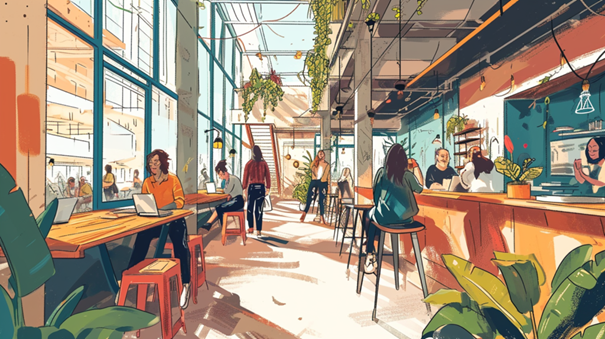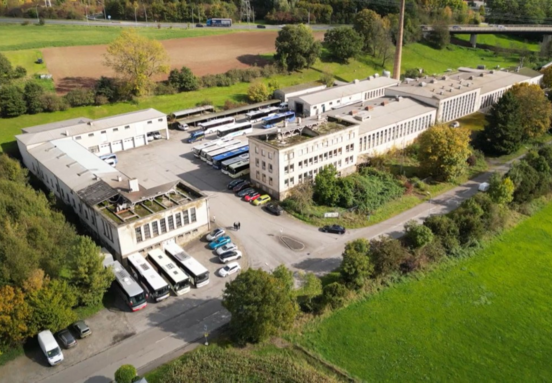One of the main trends is the rise of hybrid workspaces, where in-person and remote work coexist harmoniously. These spaces offer the flexibility sought by employees, allowing them to work from anywhere. Companies are adapting their premises to boost productivity and employee well-being while reducing their physical footprint. The vast open-plan offices are giving way to more cozy and functional workspaces, fostering collaboration and human interaction.
Another emerging trend is that of "resimercial" and "hotelification," where the warm atmosphere of homes blends with the elegance of hotels in office design. This approach aims to create welcoming and inspiring environments, promoting employee well-being and motivation.
The four-day workweek is gaining popularity, offering employees more flexibility and a better work-life balance. With the advent of artificial intelligence, routine tasks are automated, freeing up time for more creative and innovative activities.
Adaptability becomes essential in workspace design, with modular and flexible layouts allowing for quick adaptation to changing company needs. The integration of AI also transforms work environments, with spaces designed to foster creativity and collaboration.
The rise of Generation Z in the workforce brings a new wave of innovation and flexibility. Companies must adapt to their expectations by cultivating a dynamic and inclusive culture.
Sustainability becomes a priority in office design, with the use of eco-friendly materials and initiatives aimed at reducing carbon footprint. Workspaces are also redesigned to promote concentration and employee well-being, with dedicated areas for "deep work" and relaxation.
Finally, companies are implementing strategies to increase workplace well-being and combat burnout, offering mental health and wellness programs as well as a positive and healthy work environment.







